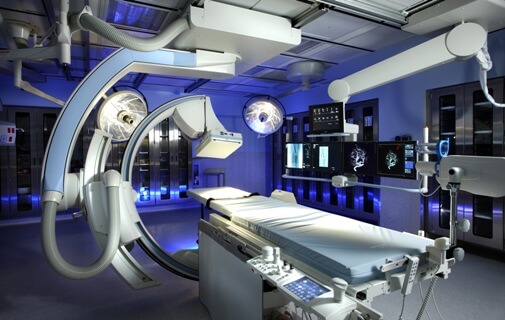Surgery for Pituitary Tumors
Surgery is the most common treatment for pituitary tumors. If the pituitary tumor is benign and in a part of the brain where neurosurgeons can safely completely remove it, surgery might be the only treatment needed. The patient will probably need surgery if the tumor:
- Is producing hormones that medication cannot control
- Is causing health problems by pressing on the pituitary gland or other parts of the nervous system.
- Is still growing despite previous treatment with medication or surgery
The most common types of surgery for pituitary tumors are:
Minimally-invasive endonasal endoscopic surgery for pituitary tumors:
Neurosurgeons at the Johns Hopkins Pituitary Tumor Center can remove nearly all benign pituitary tumors using endonasal endoscopic surgery. This minimally-invasive approach enables neurosurgeons to:
- Remove tumors and lesions through the nose and sinuses, without cutting the face or the skull
- Access areas of the brain that are difficult to reach with traditional surgery
Neurosurgeons perform the procedure using an endoscope, a small telescope-like device equipped with a high-resolution video camera and a bright light. To remove a tumor or take a sample of it (a biopsy), they attach special instruments to the endoscope.
Benefits of endonasal endoscopic surgery:
Endonasal endoscopic surgery:
- Results in less pain and a faster recovery than traditional surgery
- Does not leave a visible scar on the face or scalp
- Allows the patient to start radiation therapy, if needed, almost immediately, without waiting for incisions to heal
Learn more about endoscopic endonasal surgery.
Minimally-invasive neuroendoscopic surgery:
Neuroendoscopy is a minimally invasive procedure in which Johns Hopkins neurosurgeons remove some pituitary tumors through a small hole (about the size of a dime) in the skull or through the mouth or the nose.
Neuroendoscopy enables neurosurgeons to:
- Access areas of the brain that cannot be reached with traditional surgery
- Remove the tumor without cutting or harming other parts of the skull
Neurosurgeons perform the procedure using an endoscope, a small telescope-like device equipped with a high-resolution video camera and a bright light. To remove a tumor or take a sample of it (a biopsy), neurosurgeons attach special instruments to the endoscope.
Craniotomy:
Another type of surgery to remove a pituitary tumor is called a craniotomy. This procedure involves making an incision in the patient’s scalp and removing a piece of bone from the skull. The neurosurgeon can then find and remove the tumor, or as much as the tumor as possible without risk of severe damage to the brain. The neurosurgeon then replaces the bone and closes the incision.
Ways Johns Hopkins improves the results of surgery:
 Intraoperative CT
Intraoperative CTOur neurosurgeons use state-of-the-art imaging and surgical techniques to improve the results of surgery for pituitary tumors. These techniques let neurosurgeons precisely plan and perform surgery, using the least invasive approach possible. They include:
- Intraoperative imaging uses special MRI or CT scan machines in the operating room to help neurosurgeons remove brain tumors safely and effectively
- Image-guided stereotactic surgery is a procedure which uses advanced computers to find the pituitary tumor and create a three-dimensional image of it to help neurosurgeons remove brain tumors safely and effectively
Post-surgery
After surgery, a team of doctors and nurses who are who are specially trained in neurosurgery, endocrinology, and critical care will help the patient recover. Before the patient leaves The Johns Hopkins Hospital, they will provide detailed instructions about what to do at home.
Observation
Observation means seeing a neurosurgeon or endocrinologist and having imaging tests performed periodically. Treatment may be necessary later, for example, if the pituitary tumor grows or symptoms worsen.
